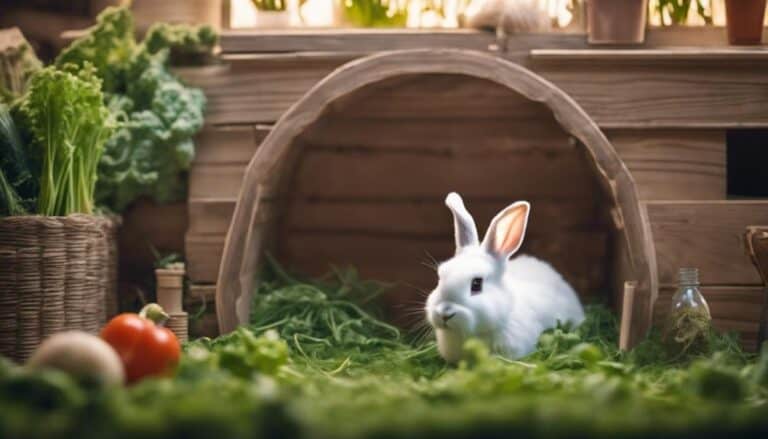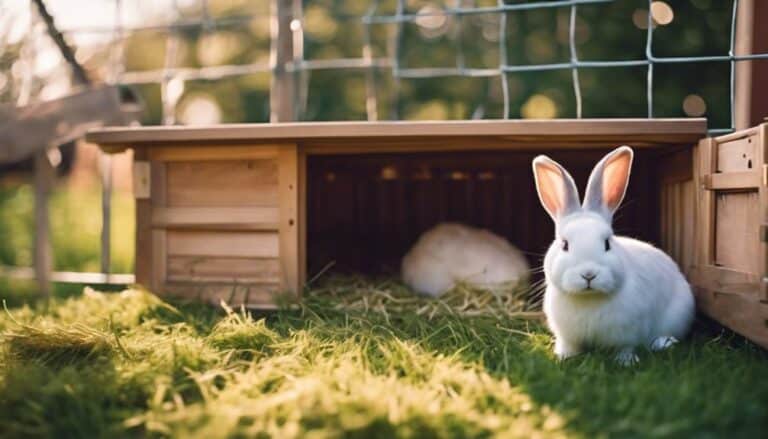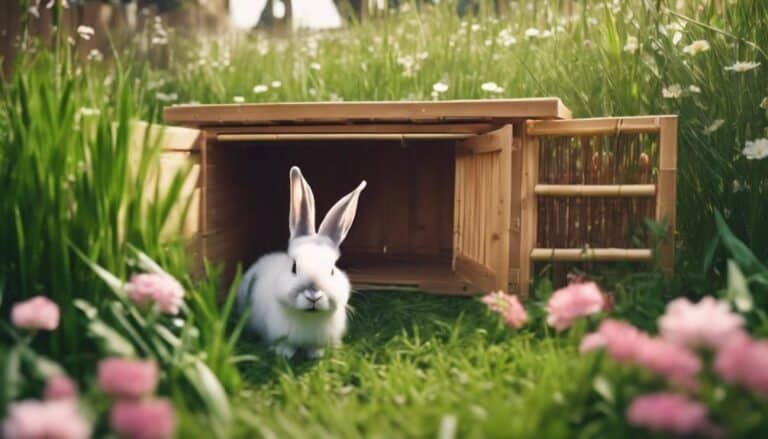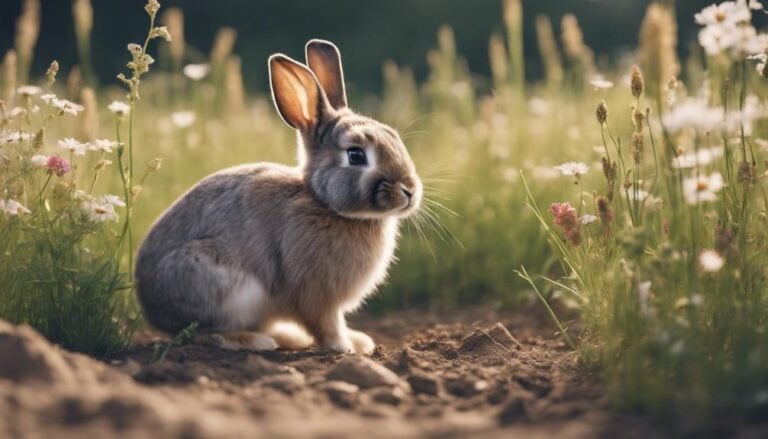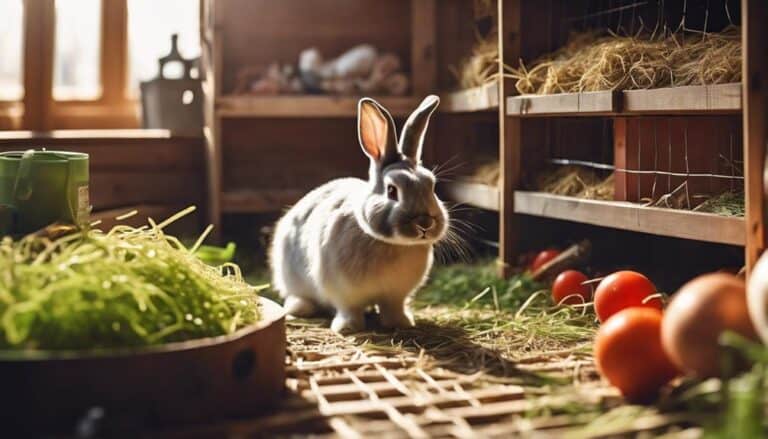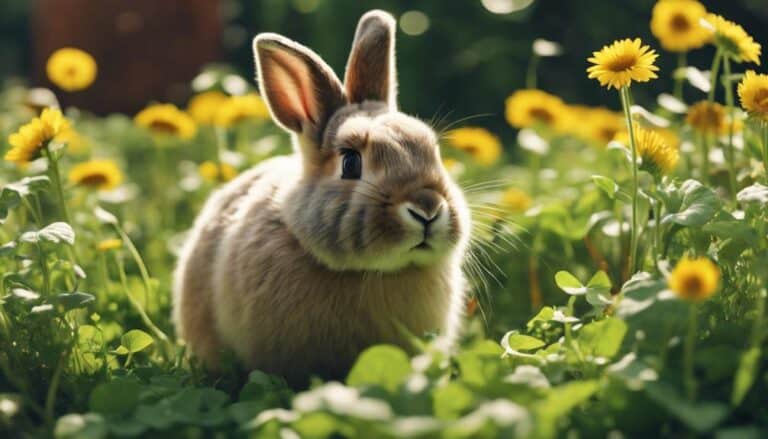When it comes to setting up a bunny's habitat, you might think you need a laundry list of items to make it just right. However, focusing on a few key essentials can make all the difference in creating a comfortable and safe space for your furry friend.
From the right enclosure to providing enriching activities, there are essential elements that go beyond the basics.
Stay tuned for learn how these essentials come together to form a bunny haven that meets both physical and mental needs.
Contents
Key Takeaways
- Provide a spacious enclosure with proper ventilation and modifications for enrichment.
- Create an area for exercise with platforms, ramps, and shelters for security and stimulation.
- Offer a separate sleeping compartment with clean bedding and toys for entertainment.
- Ensure safety with sturdy enclosures, supervision, and prevention of toxic substance access.
Choosing the Right Enclosure
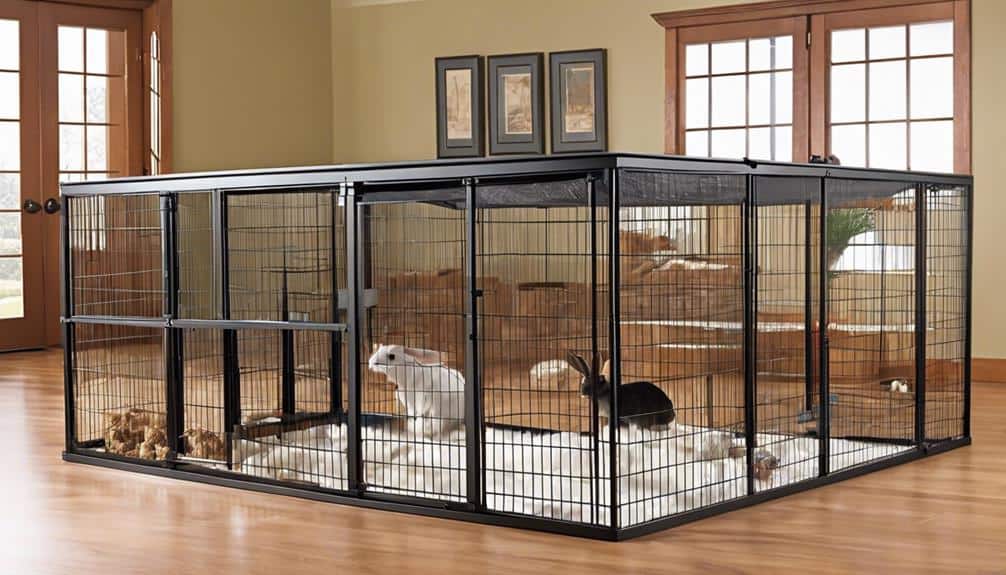
When selecting the ideal enclosure for your bunny, prioritize spaciousness to guarantee their well-being and prevent stress. A rabbit needs a habitat that's at least six times its size when fully grown, providing ample space for movement and comfort. Avoid using cages with wire bottoms to protect their delicate feet; instead, opt for alternatives such as Neat Idea Cubes or large condo cages.
Proper ventilation is important in the enclosure to prevent respiratory issues and make sure a healthy living environment for your bunny. Including a sleeping compartment within the hutch is important for the rabbit to have a comfortable and secure resting area. Additionally, you can modify commercial cages by adding shelves for resting or exercise to create a more enriching environment for your furry friend.
Providing Ample Exercise Opportunities
To guarantee the best health and happiness for your bunny, providing ample exercise opportunities is essential. Bunnies are active animals that need space to stretch, run, and explore in order to maintain their physical and mental well-being. Here are some key elements to take into account when setting up exercise opportunities for your furry friend:
- Large Run: Offering a spacious run allows your bunny to move around freely and engage in natural behaviors like hopping and exploring.
- Raised Areas: Including platforms or ramps in the run gives bunnies the chance to jump and climb, promoting exercise and agility.
- Hiding Places: Providing shelters or tunnels in the run gives bunnies a sense of security and privacy while they exercise.
Remember to use wire mesh that's secure and safe, include chew toys to keep your bunny entertained, provide a water bottle for hydration, and place a litter box in the exercise area for convenience.
Creating a Cozy Resting Area
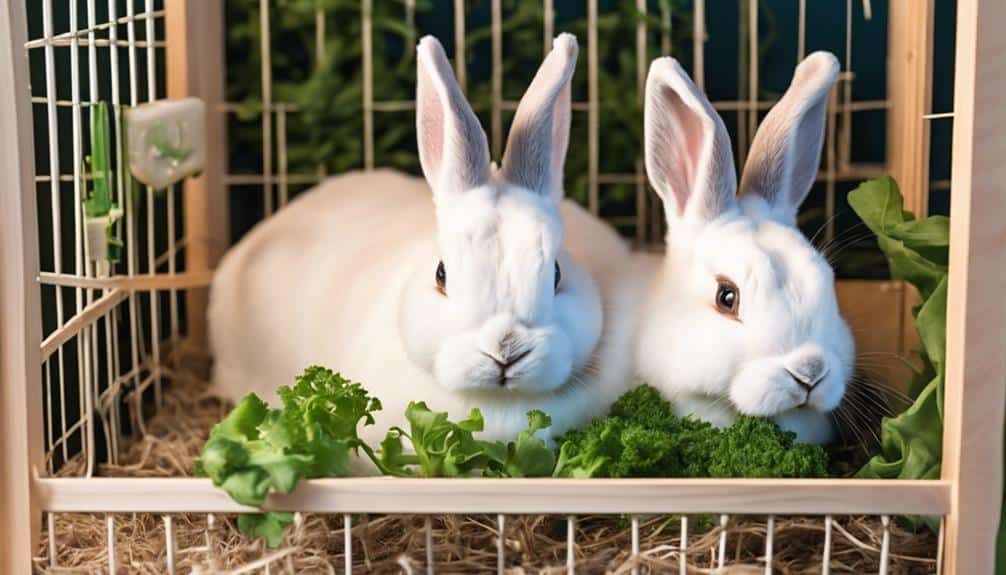
After providing ample exercise opportunities for your bunny, the next step is to guarantee a cozy resting area where your furry friend can relax and recharge. Start by providing a separate sleeping compartment in the hutch, making certain it's well-ventilated, dry, and draught-free. Use clean and dry bedding like hay or straw to offer insulation and create a snug environment for your bunny. Avoid using wood shavings as bedding material to prevent respiratory issues.
Setting up a designated area for sleeping and eating/relaxing helps establish a routine for your bunny's rest. It's crucial to incorporate toys into the resting area to keep your bunny entertained and mentally stimulated. Opt for safe options like plastic baby toys to prevent any harm. Additionally, always make sure there's a food bowl within easy reach to keep your bunny well-fed and hydrated.
Ensuring Safety and Protection
For the best protection and safety of your rabbit, secure the habitat to prevent accidental escapes. When housed indoors, it's crucial to take extra precautions to guarantee your bunny's well-being. Here are key points to ponder:
- Utilize Secure Enclosures: Invest in sturdy enclosures and runs to protect your rabbit from potential predators and make sure they remain safe within their living area.
- Supervise Outdoor Playtime: When allowing your rabbit some outdoor time, always supervise them to safeguard against dangers like other animals or hazardous objects.
- Prevent Access to Toxic Substances: Keep harmful substances such as cleaning products, houseplants, and certain foods out of reach to avoid accidental ingestion and potential harm to your rabbit.
Maintaining Proper Hygiene
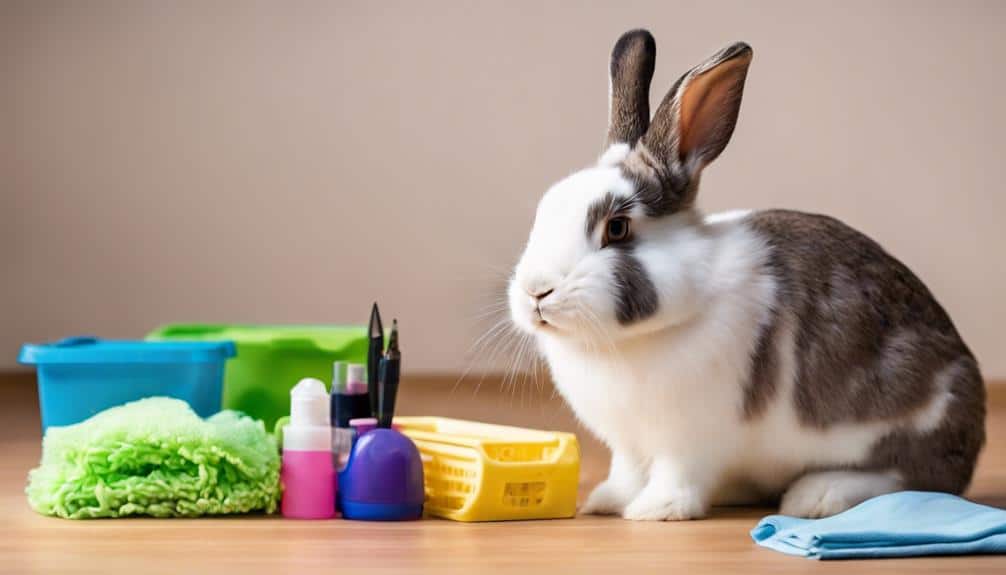
Secure the cleanliness and hygiene of your bunny's habitat by utilizing newspaper or shredded paper for a designated toilet area. This practice helps maintain waste effectively, making daily cleaning easier. Make sure to clean living areas daily and promptly replace any wet bedding to prevent the spread of bacteria and the buildup of unpleasant odors.
Additionally, safeguard your bunny's safety by keeping potentially toxic substances out of reach. This precaution is important for maintaining a healthy environment for your furry friend. When it comes to transport, always use a carrier to move your rabbit safely. This not only prevents stress but also minimizes the risk of injuries during travel or vet visits.
Remember to have daily care routines in place and keep emergency contact details accessible for quick assistance in case of any health concerns or emergencies. By following these guidelines, you can ensure a hygienic and safe habitat for your beloved bunny.
Frequently Asked Questions
What Do You Need for a Bunny Habitat?
To create a comfortable bunny habitat, you need bunny bedding, a proper diet, exercise space, hideaway spots, and social interaction. Make sure to prioritize these essentials for your furry friend's well-being and happiness.
What Does a Bunny Enclosure Need to Be?
For a bunny enclosure, you need proper bedding, adequate space, enrichment activities, safe hiding spots, and chew toys. Assure a spacious living area, a litter box, food and water bowls, hay containers, toys, and a cozy sleeping compartment.
What Are the Habitat Needs of Rabbits?
To meet a rabbit's habitat needs, focus on bedding options for comfort, proper ventilation for health, a consistent feeding schedule for nutrition, ample space for movement, and social interactions for mental well-being. Prioritize these essentials for a happy bunny.
What Supplies Do You Need to Own a Bunny?
You need grooming supplies, bedding, food, water, toys, enrichment, a litter box, hay, and items for exercise and socialization to own a bunny. Ensuring these essentials will create a comfortable and stimulating habitat.
How Can I Improve My Bunny’s Habitat with Essential Items?
Improving your bunny’s habitat can be easy with a few enhance bunny habitat tips. Start by providing plenty of space for exercise and hopping. Add essential items like a cozy hiding spot, chew toys, and a litter box. Incorporating these elements will create a comfortable and stimulating environment for your furry friend.
Conclusion
Now that you have all the essentials for a bunny's habitat, remember that each bunny is unique and may have specific preferences.
Experiment with different setups and observe your bunny's behavior to tailor their living space to their liking.
By providing a suitable environment with all the necessary elements, you can guarantee your bunny stays happy, healthy, and safe in their new home.

